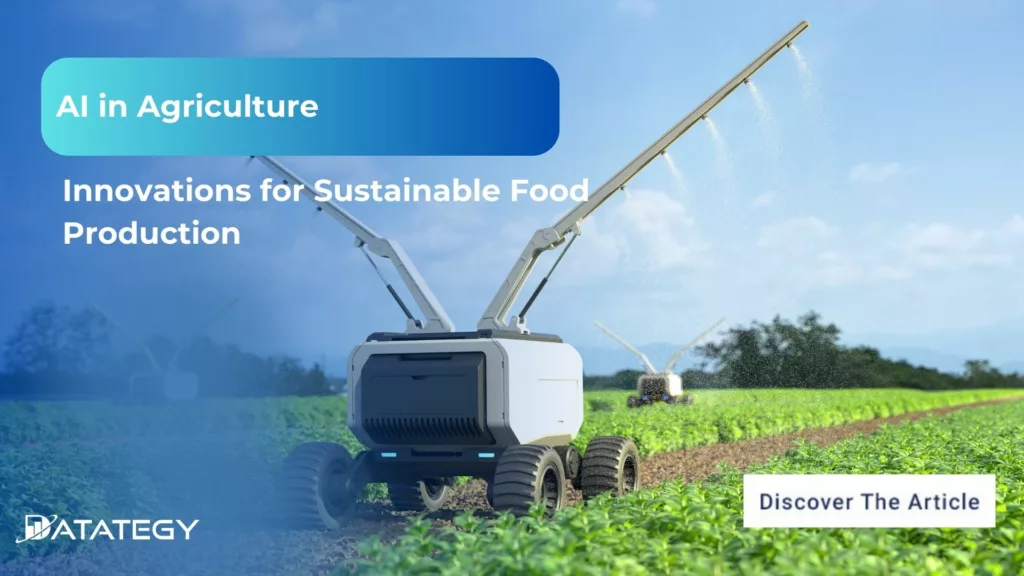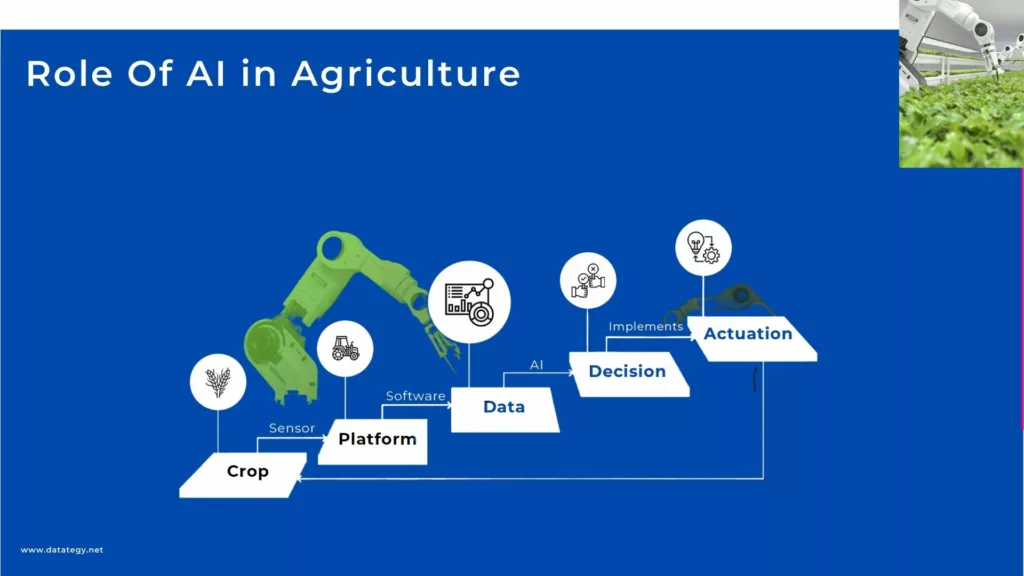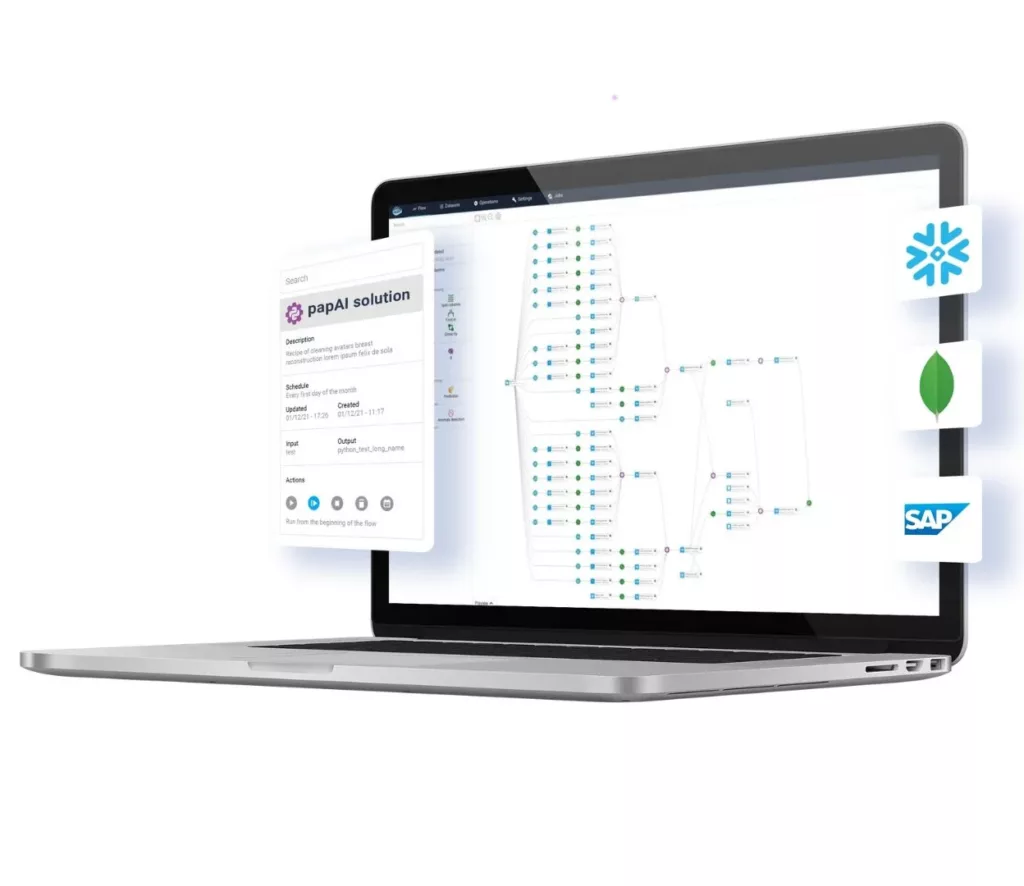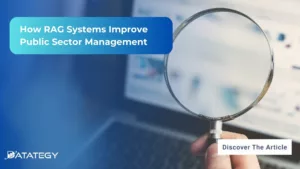How Law Firms Use RAG to Boost Legal Research RAG...
Read MoreAI in Agriculture:
Innovations for Sustainable Food Production
Table of Contents
ToggleToday, as the demand for food has increased with the growth of the world’s population, the old techniques of agriculture cannot meet the new economic and social challenges. In this context, AI solutions have emerged as an ally to transform this field and make it more efficient and sustainable.
There has been an evolution in the area with increased publications over the last five years, with more than 20 different AI techniques applied in the 176 studies analyzed, with machine learning, convolutional neural networks, generative AI, IoT, big data, robotics, and computer vision being the most used technologies.
The market value of smart agriculture worldwide is expected to grow from approximately 17 billion U.S. dollars in 2024 to 33 billion U.S. dollars by 2027.

In this article, we look at the significant benefits of AI in agriculture and how it can improve productivity and accessibility.
What Role does Agriculture Play in Sustainable Food Production?
As the foundation of our food system, agriculture is essential to the production of sustainable food. To address the dietary demands of our expanding population, we produce cattle and develop crops through agricultural operations.
We can produce food in a sustainable manner without destroying the environment or depleting natural resources thanks to sustainable agriculture. Crop rotation, organic farming, integrated pest control, and other practices can help reduce the amount of hazardous chemicals used and preserve soil fertility for future generations.
Moreover, agriculture is a major factor in solving global concerns related to food security. Sustainable agricultural methods guarantee food supply while simultaneously helping rural communities’ economies.
We can improve food sovereignty and lessen our reliance on imports by encouraging local food production and providing assistance to small-scale farmers. Furthermore, the use of sustainable agriculture techniques aids in the preservation of ecosystems, biodiversity, and endangered species.
Overview of Traditional Farming Practices
Crop rotation is a common method in traditional farming, whereby several crops are planted in succession in the same area to organically manage pests and restore soil nutrients. This approach promotes long-term agricultural sustainability by fostering biodiversity and assisting in the prevention of soil deterioration. Furthermore, livestock are commonly incorporated into traditional agricultural practices by these farmers, who use animals for traction, dung for fertilization, and rotational grazing to preserve pasture health.
Traditional agricultural methods are still widely used, but they are not without difficulties. Reliance on physical labor may provide economic and social challenges, especially in developing nations, while restricted access to contemporary technology and agricultural inputs might limit output.
Moreover, ancient farming practices could not be as accurate and effective as contemporary agricultural techniques, which might result in poorer yields and a greater susceptibility to environmental degradation and climatic fluctuation.
What are the Advantages of using Artificial Intelligence in Agriculture?
Predictive Analytics
Weather patterns, insect infestations, and agricultural yields may all be predicted by AI-powered algorithms by analyzing both historical and current data. Farmers that anticipate these variables may take preemptive steps to reduce risks and increase output, which promotes more effective and sustainable agricultural methods.
According to research in the International Journal of Information Management, agricultural predictive analytics may boost crop yields by as much as 25%.
Crop Monitoring and Management
AI makes it easier to monitor crop health and growth in real time by using methods like picture recognition and remote sensing. Farmers may minimise crop losses and lower their reliance on chemical inputs by swiftly addressing difficulties by identifying early indicators of stress, disease, or nutrient shortages.
Automation and Robotics
Labor-intensive operations like planting, harvesting, and weeding are made easier by AI-driven robots and automation technology. Farmers may maximize output, minimize the environmental effect, and save labor expenses by using autonomous machinery that is outfitted with artificial intelligence algorithms.
Robotic technology in agriculture may save labor expenses by up to 90%, according to research from the Food and Agriculture Organisation (FAO).
Improved Efficiency of Resources
Through accurate nutrient, pesticide, and water management, artificial intelligence contributes to resource optimisation. AI supports sustainable agricultural practices and ensures the long-term profitability of farming operations by cutting waste and pollution in the environment.
Innovation and Research
The application of AI to agriculture promotes perpetual research and innovation, resulting in the creation of new tools and methods to take advantage of new possibilities and problems for the industry. AI speeds up agricultural progress and encourages sustainable food production for future generations by promoting cooperation between farmers, academics, and tech developers.
In order to assist satisfy the rising need for food throughout the world, the United Nations Food and Agriculture Organisation (FAO) notes that AI-driven innovation in agriculture has the potential to enhance agricultural production by 20–30% by 2050.

Schema of AI’s role and process in Agriculture
Real-Word Applications of Artificial Intelligence Solutions in Agriculture
1- Weed Detection and Management
When they compete with crops for nutrients, sunshine, and water, weeds may be a farmer’s biggest enemy. However, farmers may use AI to precisely target weeds, reducing the need for toxic pesticides.
Artificial intelligence (AI) systems may distinguish between crops and weeds by evaluating photos taken by drones or cameras. This makes it possible to apply herbicide precisely where it is required. Less pesticides in the environment and healthier crops are mutually beneficial.
2- Crop Yield Prediction
Crop output predictions are no longer somewhat of speculation. Farmers may more efficiently plan their harvests and manage their resources by using AI to anticipate yields with astounding precision. Artificial intelligence (AI) systems can forecast agricultural yield by evaluating past data, weather trends, and soil properties. This provides farmers with important information on when to plant, when to irrigate, and when to harvest.
3- Evaluation of Land Health
A profitable farm is built on healthy soil, and AI assists farmers in maintaining their land. AI algorithms are able to evaluate soil health, detect nutrient shortages, and suggest specific remedies by evaluating soil samples and environmental data. Improving soil fertility and crop yields can be achieved by following the customized advice of a soil scientist who is present on the farm.
4- Weather Forecast
Despite the unpredictability of the natural world, farmers are benefiting from AI in order to keep ahead of the weather. AI algorithms are able to predict weather patterns and climate trends with amazing accuracy by analyzing large volumes of data from satellites, weather stations, and climate models.
AI provides farmers with useful information on how the weather will affect their crops, enabling them to modify their agricultural techniques accordingly. This information ranges from forecasting droughts to foreseeing storms.
5- Livestock and Animal Monitoring
Animal tracking is a complex task, but artificial intelligence is making it simpler than ever. Artificial intelligence (AI) systems can track animal behavior, health indicators, and ambient factors in real-time by evaluating data from wearable sensors and cameras. Farmers can take early action when necessary since AI provides them with vital insights into the health and well-being of their animals, from analyzing eating patterns to identifying symptoms of sickness.
Demystifying AI: A Comprehensive Guide to Key Concepts and Terminology
This guide will cover the essential terminology that every beginner needs to know. Whether you are a student, a business owner, or simply someone who is interested in AI, this guide will provide you with a solid foundation in AI terminology to help you better understand this exciting field.

Overcoming Challenges and Adoption Barriers
AI adoption in agriculture is not without its difficulties and obstacles, but they may be surmounted with the right tactics.
The expense of integrating AI technology, which includes spending on software, hardware, and training, is one of the main challenges. It could be difficult for many farmers, particularly smallholders, to afford these up-front expenses. But government grants, subsidies, and financial aid initiatives can help open up AI to farmers, allowing them to use technology without breaking the bank.
The lack of understanding and expertise about AI among farmers is another issue. Those who don’t know how to incorporate new technology into their current agricultural operations or about their possible advantages may be reluctant to embrace them.
n order to solve this, awareness-raising campaigns, training courses, and extension services may all be very helpful in equipping farmers with the know-how and abilities they need to properly use artificial intelligence (AI).
In what ways does partneraing with AI and data experts like Datategy enable organizations to Enhance AI Adoption ?
Organizations may greatly increase their adoption of AI in a number of important ways by collaborating with AI and data professionals like Datategy.
First of all, by bringing specific knowledge and experience in AI and data science, Datategy’s professionals help organizations better manage the challenges associated with adopting AI. Through the use of their profound comprehension of AI technologies, methodologies, and optimal practices, establishments may expedite their AI endeavors while circumventing typical obstacles and difficulties during the process.
Secondly, working with Datategy gives businesses access to cutting-edge tools, technologies, and resources that they may not have in-house. Datategy offers an all-in-one AI platform called papAI. This access to advanced technologies enables companies to fully exploit the potential of AI and extract valuable insights from their data, driving innovation and competitive advantage.
papAI differentiates itself not just with its potent AI capabilities but also with its range of deployment options that cater to different company needs and preferences. This deployment flexibility ensures that businesses can seamlessly integrate papAI’s cutting-edge capabilities into their existing infrastructure, reflecting the company’s commitment to adaptability.
Among the various options provided by papAI are SaaS, Hybrid, and On-Premise deployment formats. These models enable companies to choose the deployment strategy that best meets their operational requirements.

Predictive Analytics.
Crop Monitoring and Management.
Automation and Robotics.
Improved Efficiency of Resources.
Innovation and Research.
The lack of understanding and expertise about AI among farmers is another issue. Those who don’t know how to incorporate new technology into their current agricultural operations or about their possible advantages may be reluctant to embrace them.
1- Weed Detection and Management.
2- Crop Yield Prediction.
3- Evaluation of Land Health.
4- Weather Forecast.
5- Livestock and Animal Monitoring.
Interested in discovering papAI?
Our AI expert team is at your disposal for any questions
How RAG Systems Improve Public Sector Management
How RAG Systems Improve Public Sector Management The most important...
Read MoreScaling RAG Systems in Financial Organizations
Scaling RAG Systems in Financial Organizations Artificial intelligence has emerged...
Read MoreHow AgenticAI is Transforming Sales and Marketing Strategies
How AgenticAI is Transforming Sales and Marketing Strategies Agentic AI...
Read More


